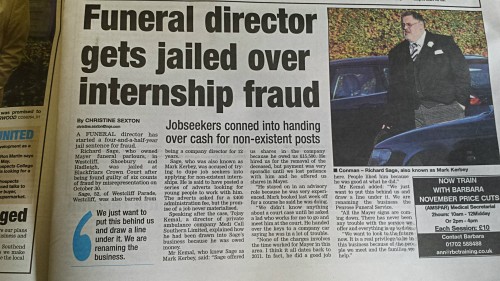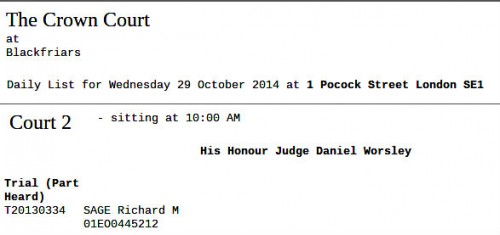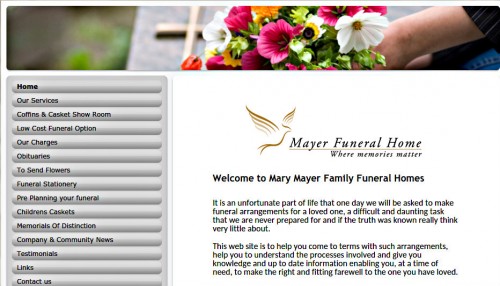When Lawrence Llewelyn Bowen was at large on tv’s Changing Rooms, it was not unusual for people to weep when they saw what he’d done to their living room and, through their tears, defiantly declare that, first chance they got, they were going go out and buy 5 litres of brilliant white.
Not all, mind. Some loved the opulence and the clutter.
The same tension between magnificence and minimalism has been evident throughout the history of the British funeral. The time of greatest opulence was between 1400 and 1700, the golden age of the heraldic funeral, supervised by the College of Arms and reserved, of course, for armigerous people, ordinary folk being of no account in those days, not having Russell Brand to speak up for them. The period of greatest minimalism was during the Protectorate, when the Directory of Public Worship (1644) ordained:
When any person departeth this life, let the dead body, upon the day of burial, be decently attended from the house to the place appointed for public burial, and there be immediately interred, without any ceremony.
Cromwell’s own funeral was exceedingly grandiose.
The Puritan funeral has only been surpassed in simplicity by that minimalist newcomer, direct disposal.
The educated and the posh know that the first rule of good taste is restraint. Their fastidiousness is not endorsed by most so-called ‘ordinary people’, who love to put on a good show and, afterwards, festoon a grave with garish, joyous grieving bling. The East End funeral is a good example, the sort of occasion that Bertram Puckle had in mind in his 1926 bestseller, Funeral Customs, Their Origin And Development:
The procession conducting the body to the grave has always offered a welcomed opportunity for the display of pomp, circumstance and ostentatious grief, so prized by the vulgar mind. The average man or woman can claim public attention only at marriage and burial, and on each of these occasions a nonentity becomes the centre of attraction in a ceremonial procession to and from the church.
Not sure if he means the undertaker, the chief griever or the corpse.
We all love a bit of pomp and ceremony even if, for some people (liberals, lefties, intellectual snobs) admitting it is like fessing up that their favourite film is the Sound of Music. Strong men and women of all worldviews have wept at the spectacle of the doggy mascot of the Irish Guards. I know; I am one of them.
And that’s why I deplore the decline of the ‘traditional’ funeral for people who wish, in the spirit of the Irish Guards, to put on the dog for their funerals, but are presently declining to do so either because we, as a culture, are going through another bout of minimalism or, as seems more likely, they are not getting value from our trad, ceremonial funeral. It’s not doing them enough good to justify the expense.
Before we consider the elements of the ceremonial funeral and ask ourselves what we want to keep and what we can repurpose, let’s make sure we understand one thing above all. The modern ceremonial funeral is modelled on the Victorian funeral. And it doesn’t stop there, because the Victorian funeral was a chivalric revival of the medieval heraldic funeral. Our trad funeral has its origins in chapter one of our island story. Are we really going to stand stony-eyed and watch all that go down the pan?
The obsession with the one-off, bespoke, personalised funeral fails to take into account all those who like funerals whose format is a comfortingly familiar and recognisable and which contains a well-written, well-delivered, highly personal eulogy.
Here, then, are some generic elements of ceremonial. Which would you junk and which would keep?
1. Public
2. Processional
3. Eyecatching (ie, presents a visual spectacle)
4. Hierarchical
5. Creates a fitting sense of occasion
6. Comprises symbolic, non-verbal acts
7. Ritualistic, operating according to arbitrary or arcane rules
8. Incorporating visual, tactile, olfactory, kinetic, auditory and gustatory (food) elements
9. Participative
10. Of minimal utilitarian value
Next, which of the following statements do you agree or disagree with?
1. Funerary ceremonial is a means of preserving historic attitudes and conduct – ‘this is what we think and this is what we do when someone dies’. To reject socially sanctioned ceremonial is not an expression of autonomy, it is an anti-social act.
2. Ceremonial confers legitimacy – ‘if we did not do it this way it would be inauthentic’.
3. Tradition – ie faith in the authority of immemorial beliefs and institutions – is the path to truth – ‘I will only be able to handle this and make sense of it if I stick to the ritual.’ Desired consequences ensue if you do the ritual right.
4. Rejection or absence of ceremonial typifies a culture where institutions and collective beliefs are weak. Tradition dies when social conditions and/or belief systems alter and traditional responses are seen to produce an adverse reaction.
5. A familiar ritual is a means of dealing with something we do not fully understand. We meet the event with such wisdom as we have already assimilated from previous experiences of the ritual
6. A processional funeral is a vehicle which takes you from one mental/emotional state to another. “A good funeral gets the dead where they need to go and the living where they need to be.” – Thomas Lynch
7. Ritual is the best means of bringing people together
“A good funeral is not static. The first great necessity of death is to move the body of the deceased from here to there, that is, from the place of death to the place of final disposition. In most places around the world, and throughout most of human history, carrying the body of the deceased to the grave or the fire or the mountain, weeping or singing, mourning and praying along the way, is not done before the funeral or after the funeral – it is the funeral.” Thomas Long




